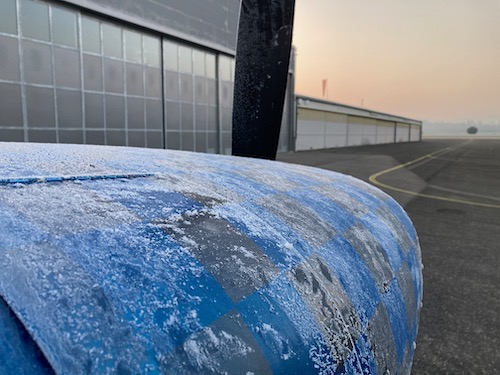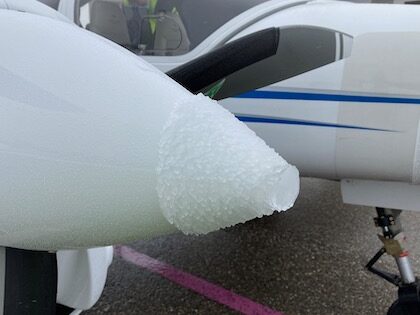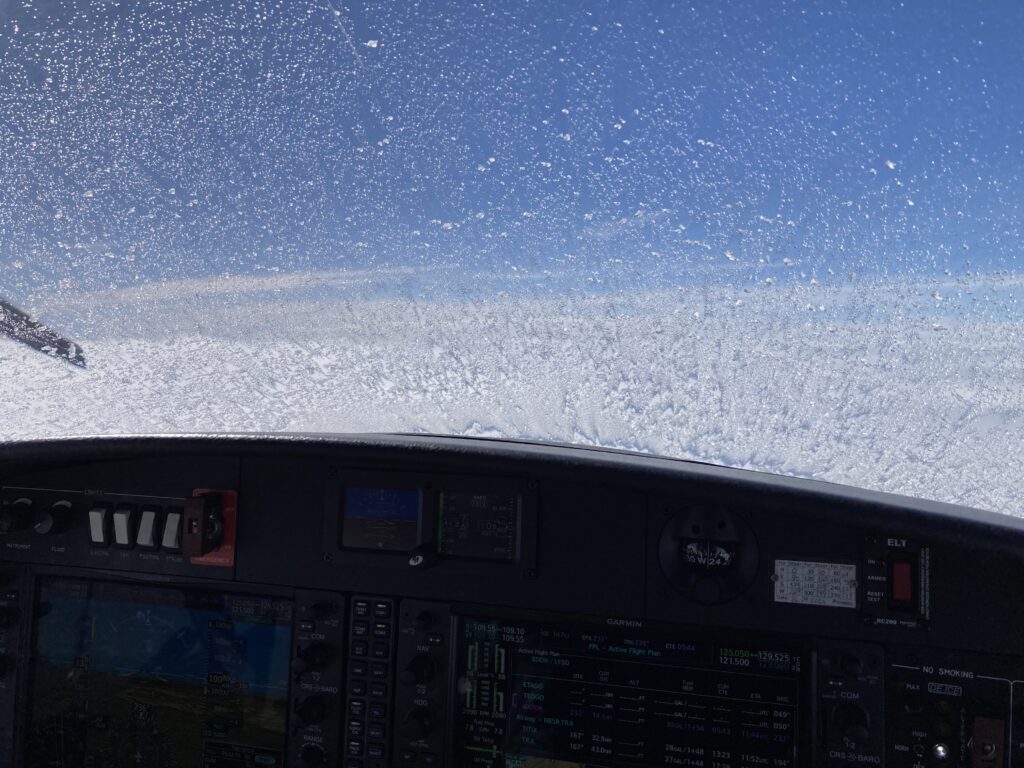
Environmental induced upsets: Ice accretion

In this concise article, we aim to elucidate the correlation between ice conditions, ice formations, and the emergence of undesired aeroplane states (UAS), upsets, and ultimately loss of control in flight (LOC-I). We’ll delve into how proactive measures, both on the ground and in the air, can effectively mitigate these challenges, ensuring safer aviation operations.
Understanding the Formation of Ice
The process of ice formation, whether on the ground or during flight, poses a significant threat to aviation safety. Throughout the history of aviation, numerous accidents have underscored the critical importance of recognising and addressing this environmental hazard.
“Icing conditions” arise both on the ground and in flight when the atmosphere contains supercooled water droplets. Upon contact with any surface, these droplets undergo instantaneous transformation into ice.
Typically, such conditions manifest when the outside temperature falls within the range of 10º to -40º Celsius, coupled with visible humidity. Flight manuals for respective aircraft comprehensively outline conditions conducive to ice formation, aiding pilots in awareness and precautionary measures.

Threats
One of the most dangerous effects of this phenomenon is the formation of ice on the wings leading edges. This alters the wing profile significantly, accelerating the separation of airflow over the wing’s upper surface and inducing stall at much lower angles of attack than usual. Additionally, ice accumulation results in a significant increase in weight and can shift the aircraft’s center of gravity, depending on its location.
Another extremely insidious threat is the potential partial or total obstruction of PITOT or static ports. If not detected in time, this obstruction can lead to situations of unreliable speed indication and consequent loss of control in flight. A notable example is the incident involving the Airbus 330 AF 447.
Lastly, there is the danger posed by ice accumulation in the engines and carburettors of piston engines, which can lead to engine failure or reduced performance.
Prevention
Effective prevention measures commence on the ground. A thorough analysis of weather maps enables anticipation of regions prone to ice formation. Particularly perilous are areas characterised by cumulonimbus clouds and cloud layers with temperatures ranging between 10º and -40º Celsius.
Pilot reports, known as PIREPs, play a crucial role in predicting and circumventing these formations whenever possible.
During flight, different aircraft types boast dedicated systems for combatting and preventing ice accumulation on flight surfaces and within engines.
In the realm of transport aircraft, these systems encompass engine anti-ice, wings anti-ice, as well as heaters for various components such as windows, pitot tubes, and static ports.
Commercial aircraft undergo rigorous certification for flight in icy conditions. Certification procedures involve various methodologies, with a primary focus on mounting profiles simulating ice formations on wing and elevator leading edges.
Accidents
Regrettably, the annals of aviation history bear witness to numerous tragedies stemming from icing incidents. A poignant example is the AF Flight 447 disaster. En route to Paris, the Airbus A330 encountered an exceptionally vigorous convective zone, leading to the near-total occlusion of crucial airspeed sensors. This rendered the pilots, who were insufficiently informed about the severity of the situation, unable to manage the aircraft effectively.
Another sobering case is the UTAir Flight 120 catastrophe, which occurred shortly after take-off as a result of inadequate ground de-icing procedures.



Lesson Learned
Prevention remains paramount in aviation safety. Thorough flight preparation and meticulous assessment of weather conditions are indispensable. Both on the ground and in the air, adherence to Standard Operating Procedures (SOPs) serves as a crucial safety net.
Furthermore, any indication of Undesired Aeroplane States (UAS) or Upset must be promptly recognised and rectified. In multi-crew operations, the role of the pilot monitoring is pivotal in swiftly identifying and resolving such situations, ensuring the safety of the flight.
In conclusion, it is evident that vigilance, preparation, and adherence to SOPs are essential elements in mitigating the risks associated with icing incidents and maintaining control during flight.
At Wings Level, we understand the critical importance of tailored training to prevent, recognise, and recover from upsets and Loss of Control in Flight (LOC-I) caused by environmental conditions such as ice accretions. Our specialised programs are designed to equip pilots with the skills and knowledge necessary to navigate safely through challenging situations. Check out our next upset prevention and recovery seminar or contact us fur further information.
v1.0 10.03.2024